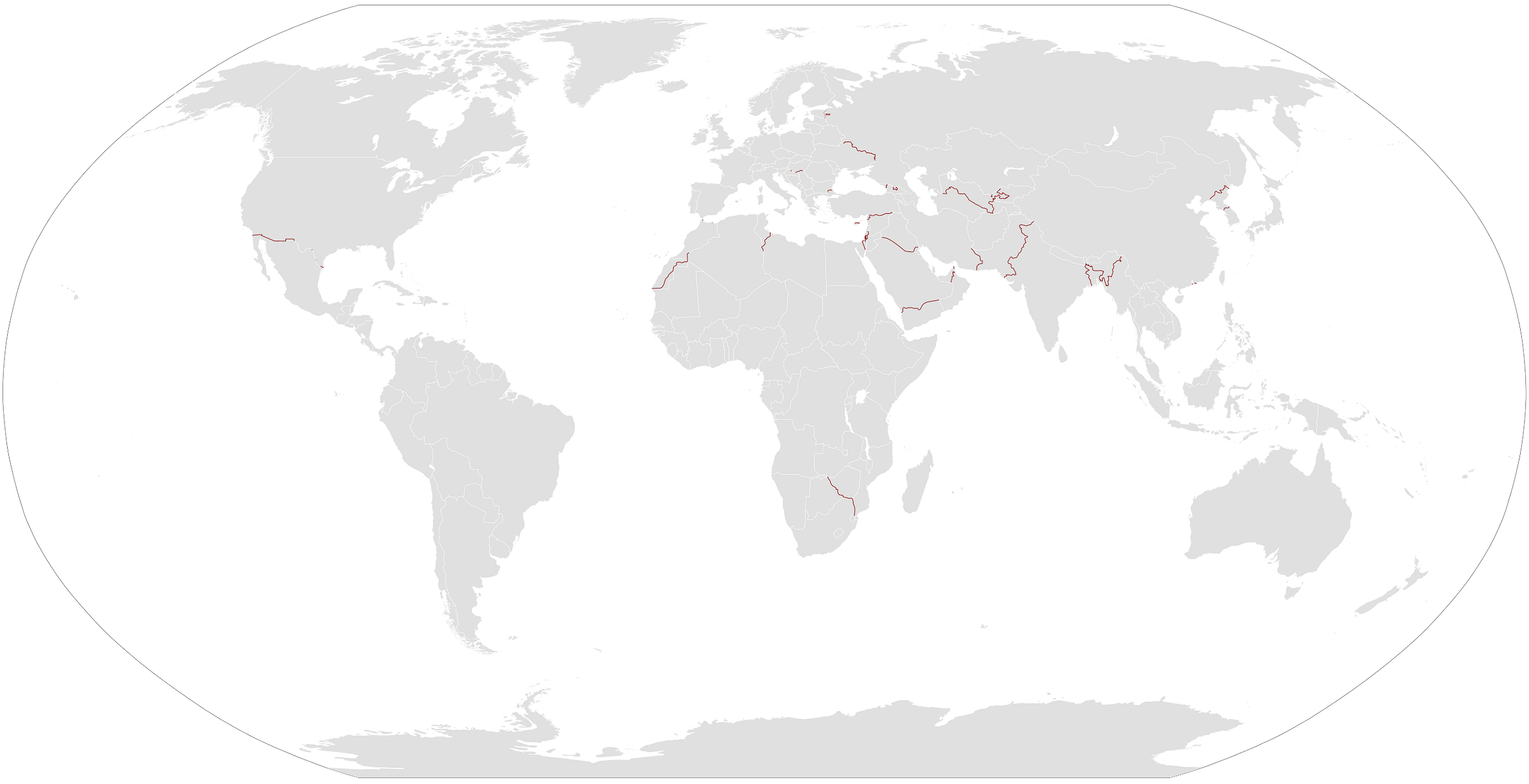7 to 77: A world more walled, but is it more secure?
Friday Focus #04 — Border walls now appeal to both authoratative and democratic regimes
Friday Focus: Highlighting the world, one image at a time.
Dear sublime reader,
In 1945, there were only 7 border walls. By the end of the Cold War, this number had increased modestly to just over a dozen.
Since then, we've seen a proliferation of walls separating nations around the world. The wall count hovered at 77 just before the pandemic struck in 2020. With an additional 14 either proposed or under construction in the years after.
What seemed like a wildcard from the U.S. president in 2016 (U.S. — Mexico border wall) is now prevalent across the globe. From Finland, Poland, Ukraine, and Greece in Europe; to India, Turkey, Saudi Arabia, and Israel in Eurasia, the landscape is changing.
A few things to note:
Reasons for Border Walls: Regions build border walls for varied reasons. They might want to prevent smuggling and illegal activity, reduce migration flows, stop violent non-state actors, increase post-conflict security, and/or prevent wildlife from entering certain territories, as is the case with Denmark.
Border Walls Are Expensive: Some of these walls, barriers, or fences can be lucrative infrastructure contracts. For instance, the Arizona-Mexico wall (made of shipping containers) came at a cost of US$123.6 million as per the state’s contract with AshBritt. Spain's 3-meter-high fence had a US$35 million price tag. And in 2022, Lithuania and Poland spent €172 million and €353 million respectively to fortify their borders with Belarus.
Maintenance Costs Aren’t Cheap Either: In 2017, the U.S. Department of Homeland Security pegged border wall maintenance at US$274 million. Israel's annual bill for its West Bank fence? US$260 million (average) since 2014. The cost of barriers goes beyond steel curtains or bricks and mortar.
Effectiveness: Do walls solve the problems they were intended to address? Your guess is as good as mine. The effectiveness of the walls is yet to be determined. Studies and analyses are needed to gauge their success in achieving their intended purposes.
Between the lines: The decision to build a border wall isn't simple; it's shaped by the balance of power between bordering countries, how neighbors act (or perceive each other), and significant international events, such as war, natural disasters, terrorism, or mass migrations.
My Thought Bubble 💭
This was an interesting find I stumbled upon while working on another essay. From an engineering perspective, some of these projects can be quite a feat, and indeed the fee for constructing something to marvel at, is substantial.
However, from a humanitarian point of view, they do raise serious concerns, such as privacy infringement, the potential for increased isolation, and disruption of communities. Not to mention potential human rights violations.
Some institutions, such as Norway’s national pension fund system, HSBC, have divested from Elbit Systems due to “serious violations of fundamental ethical norms as a result of the company’s integral involvement in Israel’s construction of a separation barrier on occupied territory” in the West Bank.
Here’s a peculiar observation I couldn't shake off: Border walls are rising in unexpected places. Europe, once home to the Berlin Wall—a symbol of oppression—is building anew. Even the United States, a traditional champion of free trade and global stability, is joining in the journey to a walled world.
Looking ahead: The future of Border walls
As we navigate the 21st century, there's a noticeable shift from physical to Digital or Virtual border walls. Instead of steel curtains or bricks and mortar, nations are employing a combination of technologies to monitor, identify, and alert authorities when people are crossing the border.
These tech systems can include drones, Remote Video Surveillance Systems, Autonomous Surveillance Towers, Automated License Plate Recognition, Biometrics (e.g., facial recognition), Integrated Fixed Towers (with day/night cameras and radar that can identify people 10 km away), and Mobile Video Surveillance Systems.
While these Digital Walls can help with dematerialisation, they come at a sizeable price tag too. Elbit Systems, for instance, inked a $239 million deal for the development of Integrated Fixed Towers along the U.S. - Mexico border; and military contractor General Dynamics has a contract worth $153 million through 2023 to expand the Remote Video Surveillance System along the same border.
Note that some of these technologies are used (and if not, will eventually seep into) for internal use within the borders. The Automated License Plate Recognition System, for example, relies on Motorola Solutions' database of 5 billion license plate records.

The proliferation of border walls from 7 to 77+ since World War II ended reveals much about our changing world.
While the engineering behind these structures may be impressive, the underlying reasons and the broader implications of such walls demand careful consideration. In an era marked by global challenges and shifting power dynamics, these walls stand as symbols of both connection and division, reflecting complex social, political, and economic realities.
Perhaps—
This trend points to the era of a ‘Global Village’ entering its sunset years.
Go deeper: Borders, Fences, and Walls: State of Insecurity? (Book)


Another super interesting read Kelvin!
I can’t say I’ve ever given much thought to border walls until I read your piece... but I can say I like being prompted to think about things I don’t normally think about - so thank you.
This is such a chin scratcher! I wonder if walls will actually make us more secure? How will we know if walls are 'working' (or not)? And digital walls? I wonder what will come next!